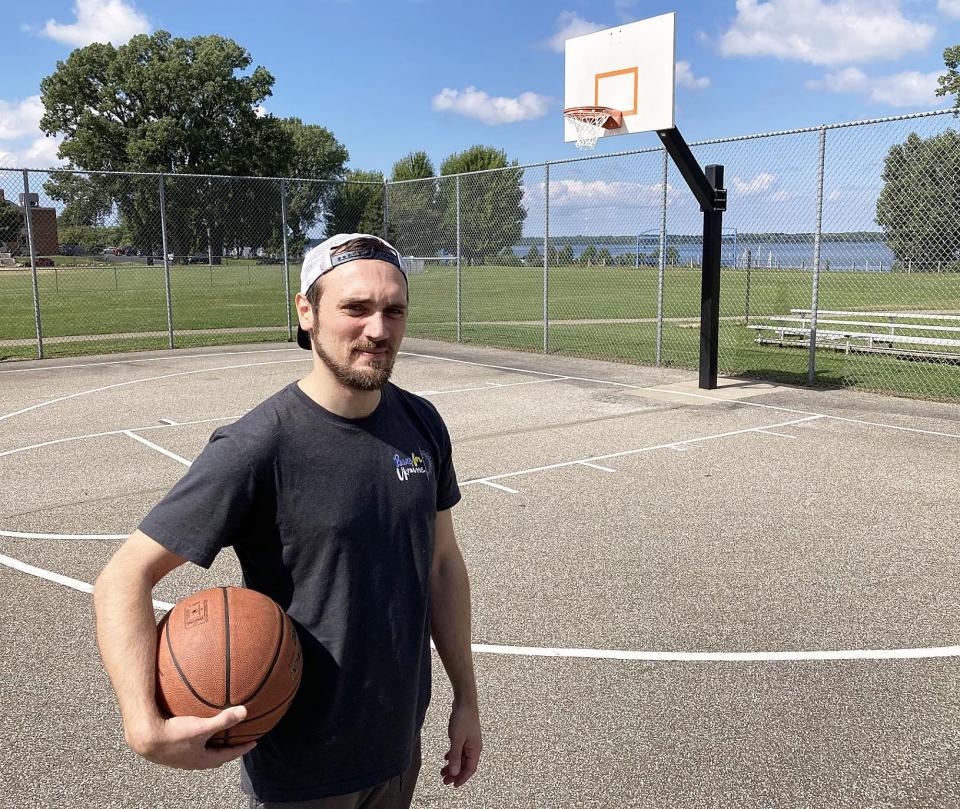Stopping seizures: New procedures give hope to Erie man with epilepsy
Ken Christiansen's first seizures, which occurred more than a decade ago, were so powerful that they forced him from his bed during the night.
He would wake up on the floor, confused and exhausted, unsure of what had happened.
"I was living by myself at the time, so I didn't know what was going on," said Christiansen, a 35-year-old Erie resident. "I later learned those were grand mal seizures and they would occur while I was sleeping."

Neurologists eventually diagnosed Christiansen with epilepsy while the Edinboro native was a student at Indiana University of Pennsylvania. Besides the occasional grand mal seizure, he would also suffer clusters of less severe seizures.
Medications did little to control Christiansen's seizures, which interfered with his sleep and ability to focus. He had to quit his job working in human resources for his uncle's business in Michigan and go on Social Security Disability.
"I talked with one neurosurgeon who wanted to cut out a piece of my brain," Christiansen said, referring to common surgeries for seizures such as temporal lobe resections. "I said, 'No, thanks.'"
Christiansen's search for treatment led him to Dr. Timothy Quezada, a Saint Vincent Hospital neurologist who specializes in epilepsy. He suggested a relatively new treatment, minimally invasive laser ablation, that is helping epilepsy patients at Allegheny General Hospital in Pittsburgh.
Both hospitals are part of Allegheny Health Network.
"Ken is someone who lived a normal life until his mid-20s, when seizures took over his life," said Dr. Alex Whiting, the AHN neurosurgeon who treated Christiansen. "He was having six, seven seizures a day. He was losing memory and losing his ability to function."
Two procedures needed to locate, treat the seizure site
Christiansen's treatment involved two separate procedures: one to pinpoint where in his brain the seizures originated, the other to destroy the malfunctioning brain cells causing the seizures.
The first procedure, called stereoelectroencephalography or SEEG, was performed March 27. It involved making tiny incisions in Christiansen's skull.
Twelve thin, floppy wires about the size of a spaghetti noodles were inserted through the incisions. These electrodes were placed in different areas of Christiansen's brain where Whiting thought the seizures might have started.
"Then they weaned me off my meds and used flashing lights, so I would start having seizures," Christiansen said. "I was there for about 10 days and they ended up finding out that my seizures started in my left temporal lobe."
Once Whiting knew where the seizures started, he could perform the laser ablation. Christiansen returned to Allegheny General on May 8 for the procedure.
Guided by MRI imaging, Whiting threaded a laser probe through a small incision in Christiansen's skull to the exact location deep in his brain from which the seizures originated.
"We then burned the area that causes all of the problems," Whiting said. "The incision is so small that we only needed one stitch."
Christiansen was released from Allegheny General the next morning, Whiting said.
Fewer seizures since the procedures
Since the procedure, Christiansen has suffered significantly fewer seizures, and they are not as severe as the ones he previously experienced.
"In the last week of two, I've had partial auras (a type of mild seizure) that just went away," Christiansen said. "They never did that before."
Though about half of the patients never experience a seizure after thermal ablation, Whiting said others usually see them decrease over the next year or two.
"It depends on the patient," Whiting said. "With Ken, the benefit is that his area of the brain affected was really small. He's close to not having seizures at all. He hasn't reported any big ones, no loss of consciousness."
Christiansen has resumed some of his favorite activities, like playing basketball with friends at Bayview Park. He also feels good enough to commit to scheduled plans, when in the past he had to wait and see how he felt.
If his seizures continue to subside, Christiansen will be able to accomplish more of his goals.
"I want to drive a car again. I need to be seizure-free for six months," Christiansen said. "My next goal would be to get a job. I'm going crazy not being able to work."
Contact David Bruce at dbruce@timesnews.com. Follow him on X, formerly Twitter, @ETNBruce.
This article originally appeared on Erie Times-News: Erie man with epilepsy undergoes new procedures to treat seizures

